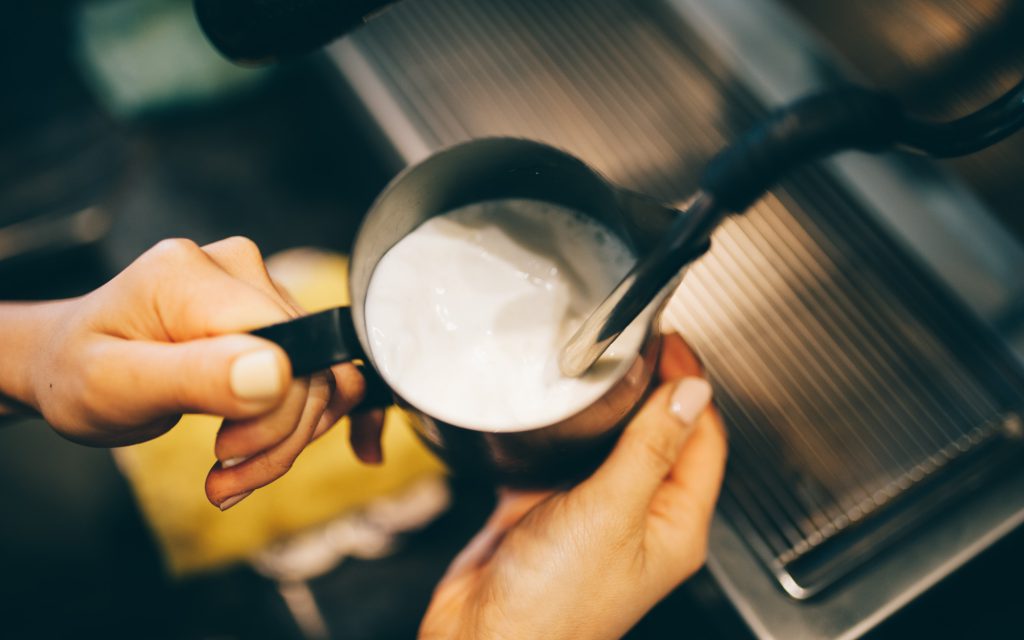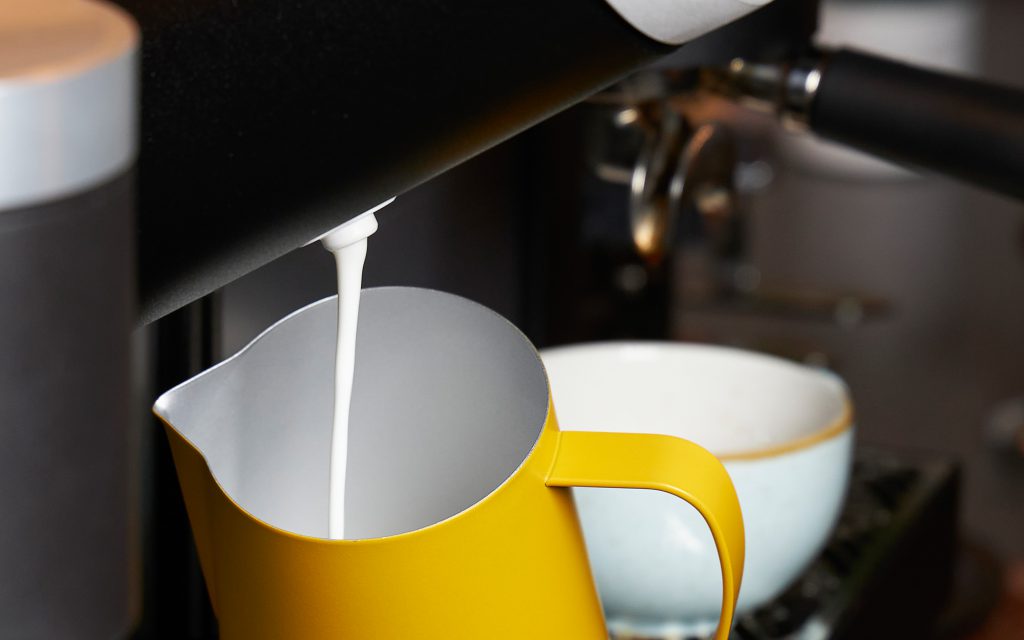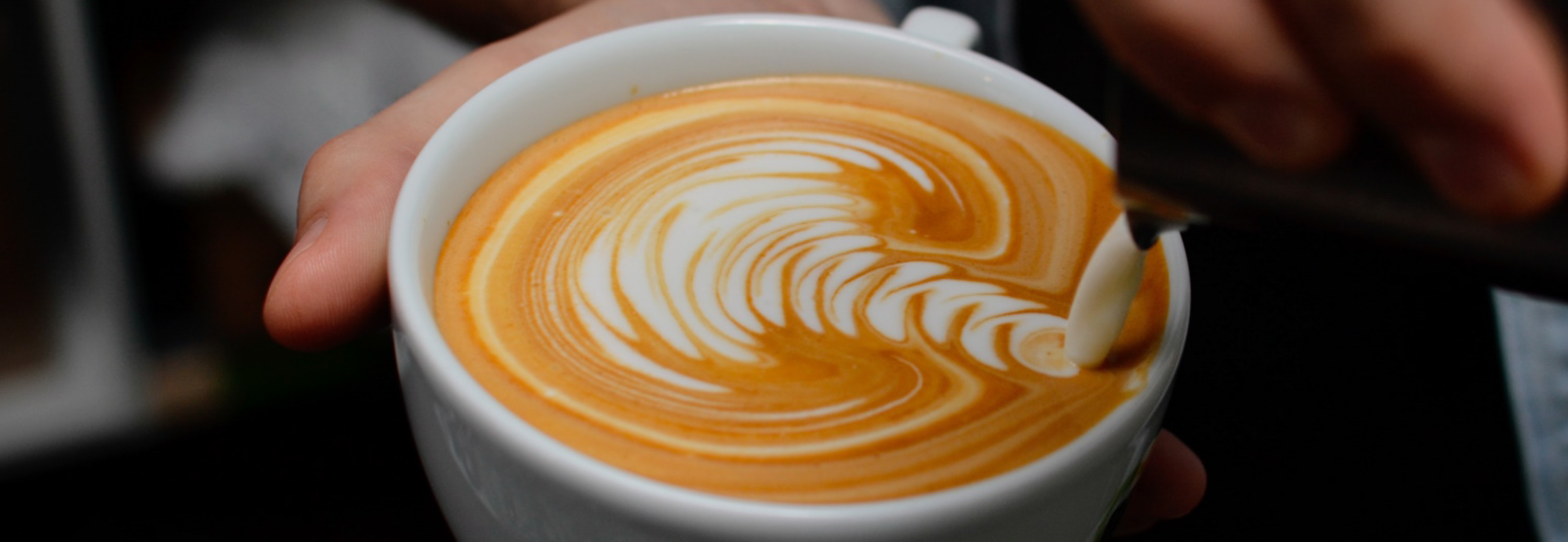How can baristas foam milk for specialty coffee without using steam?
For coffee professionals and consumers alike, a well-textured milk-based coffee beverage – such as a latte, flat white, or cappuccino – is a highly desirable sensory experience. And while espresso plays a key role in the quality of the drink, the texture of the steamed milk is also integral.
Milk steaming, however, is a notoriously difficult process to learn and master – and it can often take baristas months to know how to do it effectively.
Moreover, in recent years, we have seen more and more coffee shops and roasters invest in automated milk foaming solutions for a number of reasons.
To learn more about the benefits of foaming milk, I spoke with Umberto Majer, President and CEO at VEA Ventures, and Jaime Gamoneda, Chief Commercial Officer at Heylo Coffee. Read on for more of their insight.
You may also like our article on whether we should weigh milk in coffee shops.

The challenges associated with steaming milk
On the surface, milk steaming appears to be a relatively simple process.
“To steam milk traditionally, you need to use a steam wand,” Umberto says. “This uses steam to heat the milk [to the required temperature], and also creates a frothy and foamy texture.”
However, it’s crucial to understand the science behind steaming milk, as a number of important molecular changes take place:
- When milk is heated, its proteins elongate and unravel
- When we incorporate air into milk as it heats, the proteins form bubbles around the air
- One end of a milk protein is hydrophilic (attracted to water), while the other end is hydrophobic (repels water)
- This means that within each bubble, the hydrophilic end attracts the liquid, while the hydrophobic end attracts the air – keeping the bubble intact and creating stable microfoam
Poor steaming techniques
Although this may seem straightforward enough, without following a number of best practices for steaming milk, a barista can end up with poor results in the cup. For example, if the wand tip is overly exposed or too far above the surface of the milk, it will force large bursts of air into the milk. This will create too much foam, resulting in an uneven texture.
Conversely, if the steam wind tip isn’t exposed enough and is too far below the surface, the milk will heat up, but there won’t be enough air introduced to the liquid. This will produce too little foam (also known as “wet” milk).
According to the Specialty Coffee Association, the recommended temperature to heat milk is 55°C to 65°C (139°F to 149°F). If a barista heats milk to a temperature above 70°C, they run the risk of denaturing the proteins, and thereby producing no microfoam.
“The difficulty with steaming milk traditionally is balancing time and the amount of steam and heat you introduce to the liquid, as well as getting the texture right,” Umberto tells me. “If you get it wrong, you could end up with watery, burned, or cold milk, or even too many or too little bubbles.”
The addition of water
Umberto explains that when using traditional steaming methods, between 10% to 15% of water produced from the steam is added to the milk.
“Even with high-quality espresso machines, the minimum amount of water added is still around 8%,” Jaime explains.
Effectively, this means that the milk becomes watered down, and loses some of its creaminess and richness. Not only does this negatively impact the consumer experience, it also means you aren’t able to get the best results from your espresso-based drinks.

Does milk foaming work better for specialty coffee?
Considering the challenges associated with traditional milk steaming, we have to ask: is it better to heat milk without using steam?
Even if a barista prepares high-quality and evenly-extracted espresso, it will inevitably taste bad when paired with poorly-steamed milk – undoing the hard work from across the supply chain. And with customers paying increasingly higher prices in coffee shops, it has never been more important for the quality and consistency of milk beverages to remain high.
Moreover, as well as maintaining quality and consistency, specialty coffee shops also need to focus on efficiency. The need to balance all three components equally has led some coffee businesses to invest in automated milk foaming solutions.
“Heylo’s Milk Module, for example, uses valves to add air to the milk,” Umberto explains. “Other systems, meanwhile, use steam in an automated closed circuit to froth and heat milk.”
Jaime tells me that Heylo’s foaming technology results in frothed milk which is made up of around 90% foam. This creates a thick, dense texture as no water has been added to the milk from steaming.
“We use an air pump to inject air into the milk before it is heated,” he says. “In turn, we can make sure that all of the liquid is heated evenly at the same time.”
Controlling temperature
Umberto tells me that automated milk foaming solutions also allow for better control over the transfer of heat.
Baristas often need to multitask. As well as pulling shots and steaming milk, they can be plating food, interacting with customers, and communicating with their colleagues. In these moments, it can be easy to overheat milk, thereby burning its sugars and denaturing its proteins. Similarly, heating milk up too quickly can also have negative effects.
“Steamless heating can be more gentle,” Umberto explains. “It can also provide baristas with more control over how the milk is heated.”

Is foaming better than steaming?
Although traditional espresso machines are an integral part of many coffee shops around the world, there are several advantages to automating milk steaming or foaming.
One of the most prominent is milk waste. Research from the University of Edinburgh estimates that one in six pints of milk produced in the UK is either discarded or lost – with coffee shops certainly responsible for some of this waste.
“When steaming milk, baristas tend to throw away a small amount at the bottom of the pitcher because it’s either too ‘wet’ to pour latte art, or they used too much milk,” Umberto says. “However, high-quality automatic milk foaming systems waste less than 1% of milk used.”
Reducing energy consumption
For an espresso machine to produce steam on demand, its boiler needs to be well maintained and constantly working. Not only can this result in increased energy costs for a coffee business, but it can also have a significant impact on the environment.
However, milk foaming solutions which use induction thermal block technology like Helyo consume less energy compared to traditional machines. Ultimately, this means a coffee shop roaster can reduce both their costs and carbon footprint.
Space and efficiency
Many milk foaming solutions are modular systems, which means they are smaller than traditional espresso machines. Not only does this help to save counter space, but they can also help to improve workflow and efficiency.
For instance, some automated milk foaming systems are able to foam several different types of milk, including plant-based options.
“Heylo’s Milk Module can deliver two kinds of milk as standard, with the option to add another type,” Jaime says.
Umberto explains that different types of milk require different steaming techniques, therefore it can be difficult for baristas to achieve consistent results.
“Plant milks steam differently from one another,” he says. “With some, you have to steam for longer or add more air, while others require lower temperatures, for example.
“Non-dairy milks are also more watery than cow’s milk, so the risk of dilution is even greater,” he adds. “Using an automatic milk foaming system can produce better results.”
Increasing adoption of automation
Undoubtedly, one of the biggest coffee industry trends we’re seeing in 2023 is a growing reliance on automation.
“Steaming isn’t always a value-added activity,” Umberto says. “We’re on the verge of a revolution where automation will take over milk foaming.
“Ultimately, this will result in higher-quality drinks, and will allow baristas to focus more on pouring latte art,” he adds.
Jaime, meanwhile, believes that steaming still has its place in specialty coffee.
“Steaming milk and pouring latte art is part of being a barista,” he says. However, he adds that as a result of staff shortages and rising costs, he thinks the role of automation in coffee shops will continue to grow.

The process of steaming milk has long been a part of specialty coffee, and is beloved by many baristas around the world. However, given the growing focus on beverage quality, looking for new ways to prepare drinks is important.
More and more milk foaming solutions that use induction heating and other “steamless” methods are starting to appear on the market. And irrespective of your opinion on them, we’re sure to see more and more coffee shops begin using them in the future.
Enjoyed this? Then read our article on how to roast coffee for milk.
Photo credits: PH, Art Direction, Heylo Coffee
Perfect Daily Grind
Want to read more articles like this? Sign up for our newsletter!





